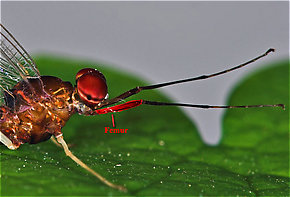Blog & Latest Updates
Fly Fishing Articles
Insects by Common Name


Mayfly Species Drunella lata (Small Blue-Winged Olive)
Taxonomic Navigation -?-
Kingdom
Animalia (Animals)
» Phylum
Arthropoda (Arthropods)
» Class
Insecta (Insects)
» Order
Ephemeroptera (Mayflies)
» Genus
Drunella (Blue-Winged Olives)
» Species lata (Small Blue-Winged Olive)
Common Names
Currently, Drunella lata shares its name with another mayfly, the former D. longicornis. That mayfly can be important in mountainous areas in the Southeast, but they are larger and the nymphs lack the distinctive pale markings mentioned in the Juvenile Characteristics section. (The information on this page does not describe D. longicornis)
Where & When
Regions: East, Midwest
Time Of Year (?): End of June through August, depending on location
Preferred Waters: Usually most abundant in larger streams and rivers
Hatching Behavior
Time Of Day (?): Usually mid-morning, but variable based on weather and water type
Habitat: Some may emerge in fast water areas, but they seem to prefer somewhat slower water.
Water Temperature: Emergence often commences as temperature approaches 62 degrees.
Emergence can be scattered and sporadic, though more concentrated emergence tends to happen early in the morning during heatwaves.Habitat: Some may emerge in fast water areas, but they seem to prefer somewhat slower water.
Water Temperature: Emergence often commences as temperature approaches 62 degrees.
Spinner Behavior
Time Of Day: Twilight
Habitat: Riffles
Female spinners often drop their eggs above the water. Action can be fast when large concentrations of spinners fall at twilight, but the spinner fall often concludes in darkness.Habitat: Riffles
Nymph Biology
Current Speed: Medium
Substrate: Gravel to cobble, often with some weed or algae
The coloration of the nymphs varies from nearly black or very dark olive to grayish or reddish brown. Most have distinctive contrasting pale areas on the pronotum (Pronotum: The top of the insect prothorax.), femora (Substrate: Gravel to cobble, often with some weed or algae

The femur of this Isonychia bicolor mayfly spinner is highlighted in red.
Drunella lata Fly Fishing Tips
Standard "BWO" patterns in #16-18 can work well for fish that rise to emerging duns. Freshly emerged duns are light olive and darken rather quickly to a dark dull olive or olive brown. Spinners are a very dark olive, often nearly black.
Fishing an imitation of the nymphs can be productive before, during, or after the emergence. Smaller trout often focus on more numerous Tricorythodes or Baetidae mayflies, but some of the larger trout may prefer the lata nymphs.
Recent Discussions of Drunella lata
Midwest Lata Emergence 20 Replies »
The D.Lata emerges in Michigan waters at 10 AM on the dot and stops at noon from about June 25 thru July 10. I have fished this hatch avidly for years and find it very punctual on moderately overcast days. Sunny days make it much shorter duration, about 30 minutes. A size 14 imitates it perfectly with dark dun wings, bright olive green body and med dun tails and legs at emergence. The body color does change to dark green after a while.
The D.Lata also is significant in PA Northern Streams in Mid May.
I have not encountered it in the South Appallacian streams as yet. I fish some smaller BWO (#16-20) in NC but none so large as D. Lata.
ReplyThe D.Lata also is significant in PA Northern Streams in Mid May.
I have not encountered it in the South Appallacian streams as yet. I fish some smaller BWO (#16-20) in NC but none so large as D. Lata.
Your Thoughts On Drunella lata:
Top 10 Fly Hatches
Top Gift Shop Designs
Eat mayflies.
Top Insect Specimens
Miscellaneous Sites
Troutnut.com is copyright © 2004-2024 Jason
Neuswanger (email Jason). See my FAQ for information about use of my images.
 privacy policy
privacy policy
